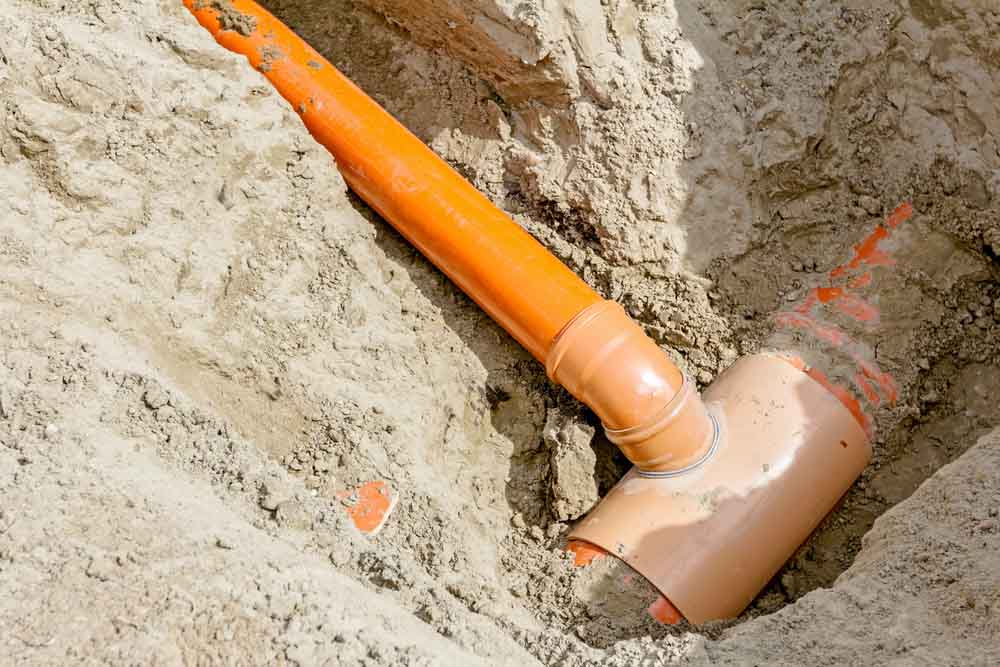The Essential Guide to Drain Cleaning vs. Sewer Cleaning

Understanding the intricate systems that keep our homes functioning smoothly is one of those necessary, albeit less glamorous, tasks we take on as homeowners.
And at the heart of this operation are the often-neglected heroes—our drains and sewers. Just like our bodies, when these vital channels are clogged, the entire system can start to back up and malfunction.
Yet, amid the chorus of sanitizing wipes, hair, and greasy residue fighting for supremacy in our pipelines, the terminology surrounding the clean-up operation often muddies the water.
It’s crucial to appreciate the nuanced differences between drain and sewer cleaning to ensure we are speaking the right language when seeking to resolve these issues promptly and effectively.
In this comprehensive blog post, we’ll demystify the key distinctions between drain cleaning and sewer cleaning, exploring their unique roles, issues, and maintenance practices.
What Constitutes a Drain and How Is It Different From a Sewer?
To properly understand the cleaning process, we must first distinguish between a drain and a sewer. A drain is any pipe that carries wastewater away from a building, usually within the structure.
These generally smaller-diameter pipes can be found in showers, tubs, sinks, and appliances, such as washing machines and dishwashers. In contrast, sewers are typically underground and connect to multiple drains, usually carrying larger volumes of wastewater and often more solid waste, eventually leading to a treatment plant or septic system.
The difference doesn’t stop there. Not only do these piped systems have distinct purposes, but they also require different methods for keeping them clear and free-flowing. Clearing a blocked kitchen sink drain, for instance, requires different tools and procedures than a clogged sewer line serving an entire apartment building.
Drain Cleaning 101
Drains can become clogged quite easily due to their everyday use for anything from rinsing vegetables (hello, starchy residue!) to disposing of small items that shouldn’t go down there. Learn more about how your drains get clogged.
A clogged drain can lead to slow drainage, water pooling, or a telltale gurgling sound. Fortunately, many homeowners can address these issues themselves with a few simple tools.
Do-It-Yourself Drain Cleaning
- Plunging: The faithful plunger is a drain’s best friend. For sink and shower clogs, a few good plunges can often do the trick by dislodging the obstruction.
- Chemical Cleaners: While a divisive topic, chemical cleaners are available for those stubborn clogs. However, they can be harmful to your pipes and dangerous to your health, so they should be used sparingly and with caution.
- Natural Remedies: Baking soda and vinegar can often effectively dissolve minor clogs and are considered safer alternatives to harsh chemicals.
Professional Drain Cleaning Services
When the clog is too deep for plunging or DIY methods, it’s time to call in the pros. Professional drain cleaning services in WA have access to high-tech equipment like video inspection tools to locate the blockage precisely.
From there, they can use water jets, also known as hydro-jetters, to blast away the clogs without causing damage to your plumbing.
The Pros of Going Pro
- Camera Inspections: Professional plumbers use specialized cameras to see inside your pipes, making for a targeted and efficient cleaning process.
- Hydro-Jetting: This high-pressure water method not only removes clogs but also scrubs the pipe clean, reducing the likelihood of future blockages.
- Rooter Services: For stubborn clogs, plumbers might use rooters, which are powerful augers designed specifically to tackle deep, thick blockages.
Sewer Cleaning: When the Problem Goes Deeper
If you’ve exhausted all DIY avenues and are still experiencing issues, the problem may reside in your sewer. A sure sign of a clogged sewer line is when multiple drains in your home are affected, along with potentially disastrous backups.
You might be wondering how these sewer lines get damaged. Read our blog on top things that can damage your sewer line to learn the answer.
Signs You May Need a Sewer Clean
- Foul Odors: A sewer line clog can cause a distinct and unpleasant smell to emanate throughout your home.
- Multiple Drain Problems: If your tub, toilet, and sinks are all struggling to drain, the issue likely resides in the sewer.
- Gurgling Noises: Strange, water-like sounds from your toilet or drainage areas can be a clue that your sewer is in trouble.
Professional Sewer Cleaning Services
When it comes to tackling sewer clogs and keeping the lines clean, there’s no room for error. Professional sewer cleaning services are equipped to handle the most severe blockages and keep your sewer system functioning properly. If your sewer lines are damaged you may also have to hire professional sewer repair services in Washington.
The Heavy-Duty Approach
- Sewer Snakes: These are larger and more robust versions of the drain augers, designed to work through the main sewer line housed underground.
- Vacuum Trucks: For large obstructions or beautiful site situations, vacuum trucks are employed to suction out blockages.
- Routine Maintenance: To avoid disasters, many homeowners invest in regular plumbing maintenance to keep their sewer lines clear.
How to Maintain a Healthy System Moving Forward
Prevention is often more cost-effective and less stressful than repair. Regular inspections, monitoring of what goes down your drains, and quick attention to any signs of blockage are crucial to maintaining a healthy plumbing system.
Best Practices for Drain and Sewer Health
- Mind What You Flush: Besides toilet paper, nothing else should be flushed. That means no wipes, no paper towels, and absolutely no ‘flushable’ wipes.
- The Grease Trap: For kitchen drains, a grease trap can prevent fat and oils from solidifying in your pipes.
- Green Cleaning: Using eco-friendly soaps and cleaners can significantly reduce the likelihood of buildup and clogs.
By understanding the differences between the two systems, how they get clogged, and how to clean them, you’ve taken a big step towards becoming a savvier homeowner. Remember, in the battle between gunk and the grime in your drains and sewers, knowledge is your most potent weapon.
About Steady Flow Sewer & Drain
Don’t wait until it’s too late—ensure your home’s plumbing system remains in peak condition with Steady Flow Sewer & Drain LLC. Whether you’re facing a minor clog or need comprehensive sewer cleaning, our team of experts is equipped with the knowledge and technology to swiftly resolve your plumbing woes. Say goodbye to DIY fixes and hello to quick and reliable professional solutions.
Contact us today to schedule your inspection or cleaning service, and take the first step towards a healthier, happier home plumbing system. At Steady Flow Sewer & Drain LLC, we believe in keeping things flowing smoothly.
Read our reviews
Special Offers

Contact Our Team for an Appointment
Our trenchless company prioritizes your satisfaction with our work. We strive to be your trusted provider of all drain and sewer line services, and we look forward to serving you. For more information about trenchless pipe lining or to arrange an appointment, call us at Steady Flow Sewer & Drain or fill out the online form today.
